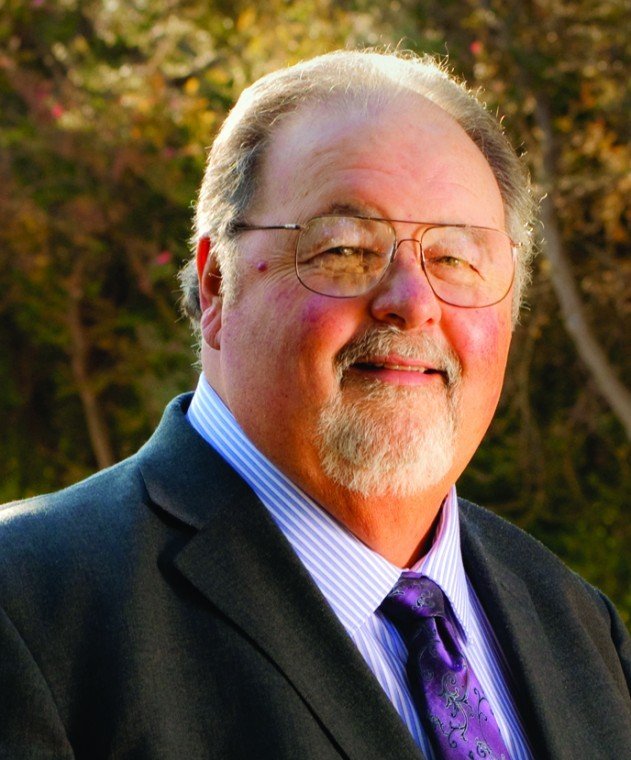Mayor Don Gage is tired of tackling Gilroy’s capital improvement projects in piecemeal fashion and is proposing a “Quality of Life” bond measure that could create a revenue stream ranging from $25 to $35 million for the city.
“I’ve given this a lot of thought and I’m ready to address the Council,” said Gage, who during Monday night’s regular City Council meeting asked for a discussion on a possible bond issue to be placed on the June 3 agenda. “It’s not for education, it’s not for police officers. It’s for capital improvements.”
As Gilroy’s housing market strengthens and annual sales tax revenue inches toward its 2007 high of $14.5 million – both portents of returning prosperity in South County – Gilroy’s homeowners now face the possibility of being asked to dig deeper into their pockets to help better the city. Currently, local homeowners are already paying $32 for every $100,000 in home value for the $34 million in bond funds used to construct the new Gilroy Library that opened in 2012.
Councilwoman Terri Aulman agrees with Gage that there are improvements the City needs to tackle, but is cognizant of local constituents’ finances.
“I’m concerned about the current environment,” Aulman noted. “Are people going to be amenable?”
However the bond idea pans out, Aulman added that the City will continue to do its best to make Gilroy a community to be proud of.
“If people think (a bond) is a good thing, we’ll move forward. If not, it’ll be back to the drawing board,” Aulman said.
Cash injections from bond revenue could augment multiple projects citywide, the mayor reasons. This includes the stalled Gilroy Center for the Arts – the designs were drawn up 8 years ago – redevelopment of downtown’s 18 unreinforced masonry buildings (edifices deemed unfit to withstand an earthquake) and improvements to the City-owned Gilroy Gardens theme park on Hecker Pass.
In order to get the bond ball rolling, the measure must have an exact price tag attached and Council needs to approve putting the motion before voters. If Council members decide June 3 to move forward with the process, the City will contract a consulting firm to generate preliminary data that gauges Gilroyan’s attitudes toward the idea of a capital improvements bond measure. Gage isn’t sure how much that will cost, but when the Gilroy Unified School District last year explored the possibility of a parcel tax to help stave massive state budget cuts to education, a parcel tax feasibility study was quoted at $16,500 by a San Francisco-based consulting firm.
The bond would need a two-thirds majority vote to pass and would be levied as a 30-year tax on assessed property valuations.
Ultimately, Gilroy’s voters will decide how much, if anything, the City can have.
“What do you think about $25 million? What do you think about $35 million?” are questions Gage imagines the pollsters posing.
But in order to make the nut for everything Gage wants to tackle in his sweeping 5-year capital improvement project, the mayor hopes voters agree to a ballpark figure of $25 million.
A bond issue that large would likely be paid for in the form of a tax on assessed property value, explained City Administrator Tom Haglund.
Haglund says the City needs to get a feel for “community sentiment and appetite” by engaging all stakeholders in the bond exploration process.
Whatever the consensus is, Gage would like an answer in June 2014, when primary ballots for state legislative positions are held.
Executive Director Donna Pray for the local philanthropic Gilroy Foundation is receptive to the tax idea and is pleased to see Gage talking about timeframes and the new Gilroy Center for the Arts in the same sentence.
The nonprofit Gilroy Foundation currently administers a $420,000 endowment – that pays 5 percent annually – to help defray rental costs to nonprofits that utilize the Interim Center for the Arts building on the corner of Monterey and Seventh streets.
The Gilroy Foundation would restart efforts to get the endowment up to its goal of $2 million if cash for the construction of a redeveloped Gilroy Center for the Arts starts to flow from the City’s coffers.
“We stopped fundraising when the City halted development in 2008,” Pray noted.
The Gilroy Center for the Arts’ design plans – which have been gathering dust since 2005 and include an auditorium, classrooms, rehearsal rooms and even a Green Room – would finally see the light of day again, Pray explained. Back in 2005, the City estimated the development of a new arts center and theater would cost between $15 million and $25 million.
The community has been making do with the Interim Center for the Arts since 2010, and Gage underscores the building’s unsuitability for satisfying the community’s artistic needs. While the building isn’t a URM – it survived Gilroy’s 1989 earthquake with no damage – there is a structural issue with the roof that limits the building’s capacity.
“Right now they can get 49 people in there,” Gage observed. “With 200 in there, they could start making money.”
One option available for the Gilroy Center for the Arts, explained Gage, is to incorporate the existing structure into a new design instead of demolishing the old one.
“It’s going to be too expensive to build a brand new one,” Gage believes.
Other projects on the mayor’s radar include partnering in the push to finish Christopher High School’s sports complex; renovating Gilroy High School’s swimming pool and parking lot; expanding city-owned Gilroy Gardens west into 160 acres of available space to attract new visitors by adding a water feature; and dealing with Gilroy’s downtown problems that include parking issues and URMs – the latter blight being of paramount importance to the mayor.
“We’ve been complaining about downtown since I was mayor the first time in 1991,” Gage remarked.
The City’s 18 URMs could be bought, then renovated or razed to the ground, explained Gage.
With new bond money, the second paseo development in downtown Gilroy would also be on a fast track to completion. The pair of paseos – a major feature of Gilroy’s plan for downtown revitalization – will form spacious walkways lined with art, plants and special paving to make downtown Gilroy much more pedestrian friendly. One is nearing completion between Fourth and Fifth streets and the City is in negotiations to purchase the land for the other.
President James Suner of the Gilroy Downtown Business Association welcomes Gage’s bond aspirations – in theory.
“We’re going to have to see some details,” Suner opined. “If the City can do it, I’m all for it.”
If anyone empathizes with Gilroy’s URM blight, it’s Suner – the mastermind behind the $50,000 “Gilroy Shark Tank” competition being held in Gilroy on June 8. The event aims to put a budding entrepreneur into one of Gilroy’s vacant non-URM downtown buildings. The competition is one part of the GDBA’s long-term goal of breathing life back into the heart of the Garlic Capital.
To Suner, tacking the URM problem by asking Gilroyans to pay for it themselves might not take off the way Gage imagines.
“It’s not easy to pass bond measure issues in Gilroy,” Suner said. “We need to find a separate solution.”
•Would go before voters in June 2014 and needs a two-thirds approval to pass
•Mayor wants to raise $25-$35 million revenue stream
•Homeowners would pay a tax on assessed home value for years
•Money only used for capital improvement projects such as Gilroy Center for the Arts, improvements to downtown, high school facilities upgrades and expansions to Gilroy Gardens















